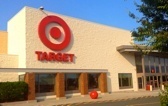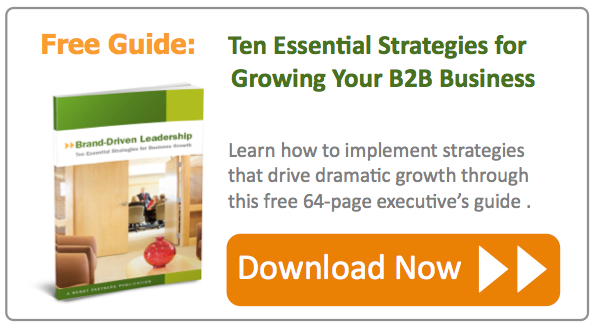Target Canada's Failure Teaches CEOs about Business Growth Strategy
 Entering a new, foreign market can be a challenge for any business. Regardless, it is still an important step for any company looking to grow internationally in the era of globalization.
Entering a new, foreign market can be a challenge for any business. Regardless, it is still an important step for any company looking to grow internationally in the era of globalization.
However, a lack of planning, research, and proper preparation can cause any great aspirations for growth to go downhill quite quickly. The successful execution of your growth strategy and delivery of your brand promise can make or break the success of your business not just overseas, but in any new market.
Target, the second-largest discount retailer in the United States, learned this after failing to successfully expand the retail empire to Canada. Here are seven lessons on business growth strategy that CEOs can learn from the failure of Target Canada:
1. Get to know the new market well. Really well.
Don’t skimp on the research, nor make assumptions about your new, potential buyers and the market you plan to enter. Target rushed into Canada so fast it couldn’t keep up with itself. However, a lack of research or desire to truly understand the Canadian retail market was probably even more to blame. Canada is an incredibly diverse nation, both geographically and culturally. Not only is it the second largest country in the world by land area, but every region in the country also has its own unique consumer culture.
Despite this, Target put no province-by-province or regional growth plan in place, and showed little interest in tailoring its offerings and products to fit the needs of its Canadian customers. When positioning your company in a new market, you need to think of it as just that – a new, unexplored market.
When preparing your growth plan, take the time to not only research your new market, but also try to understand your prospects and how to differentiate your company and your services to fit their needs. After your growth plan is successfully executed (don’t rush it!), your new buyers will take note of your interest in meeting their demands, and return the favor by actually doing business with you.
2. Don't let your brand become confused with others in the new market.
Specifically, don’t take the place of an already embedded brand that is associated with less quality than yours. The larger goal of Target’s expansion into Canada was to take the retail chain’s first step towards building a global empire. The urgent and over-ambitious nature of the plan led the company to decide on buying up real estate from an already established Canadian discount chain, Zellers. Target’s deal with Zellers allowed it to open 124 stores across Canada in a very short time, but meant that the Target brand would be replacing another one much different from its own.
Zellers stores, described by Fortune as “dumpy” and located “in areas not frequented by the middle class customers Target covets,” did not deliver the same type of experience to its customers as Target intended to. Target’s attempt to replace a dying brand diminished its own reputation, and Canadian consumers took notice.
Growth is about establishing yourself in the marketplace as a unique and competitive brand with high-quality service offerings. When looking to expand your business and your brand, be sure to remain competitive by carving your own path towards success, even if it isn’t as quick and expedient (i.e. 'cheap and dirty') as moving into another company’s former position in the marketplace.
3. Don't assume brand loyalty will carry across borders.
Brand consistency is key to meeting the expectations of customers. Perhaps one of the most interesting components of the Target Canada failure is that Canadian consumers supposedly loved U.S. Target stores, until a second-rate Canadian version moved in next door.
Part of Target’s decision to 'conquer' Canada was the hope that they could capitalize on the success of the U.S. Target stores south of the border. Canadian consumers have historically frequented U.S. Target stores when coming to America for the high-quality products, chic and affordable fashion items, and the even more competitive pricing.
However, after opening its doors in Canada, Target received complaint after complaint about the higher prices found in the new stores, which weren’t nearly as good as those at Wal-Mart, an already longtime resident in the Canadian retail market since 1994. Regardless, Target lost its competitive edge because it couldn’t deliver to Canadian consumers what it had already promised to them in the U.S.
Whether or not you have a reputation or ‘buzz’ in the new marketplace, consistency with the most positive aspects of your brand can either make or break your success. This doesn’t mean you shouldn't tailor your services to fit a particular region, which is also critical. It simply means delivering on your brand promise, anytime, anywhere.
4. Put the customers in your new market first, even ahead of your 'proven' systems.
Always put the buyer’s needs (as well as those of your front-line employees) before the standard operating procedure when push comes to shove. Consistency, detailed planning, and a strong commitment to implementation are all critical to not only your growth strategy, but also to running a smooth and sustainable operation in the new marketplace. With that being said, flexibility and being responsive to change are just as important.
Target’s botched supply chain execution in Canada couldn’t have been any worse. Stores were left with empty shelves, had too little of the merchandise that consumers wanted, and were flooded with too much of products that customers didn’t want.
Customers were not able to purchase essential products from Target even if they tried, and employees complained that since 'going off of the planogram' was unacceptable, they were not allowed to stock shelves with the products that were actually in stock. Imagine having pillows but no bedspreads, and being told not to put the pillows out on the shelves because the only available space on the rack is reserved for bedspreads (which you don't have). The result is to sell…nothing.
Inventories across Target Canada stores were a mess, but had the company made room for change and flexibility in the execution of their operation much sooner, it might have bought some time for higher-ups to improve the failing supply chain while keeping stores afloat.
As a CEO looking to grow, it is critical that you and your business stay flexible and responsive to change and the inevitable difficulties that every company faces. It’s never a good idea to present your buyer with empty promises or services, and should such a situation arise, the best option is to do what’s best for your buyer while resolving the root cause of the issue.
5. Don’t mistake brand preference for absolute brand dedication.
As mentioned earlier, Target mistakenly believed that it could duplicate the success of its U.S. border stores with Canadian consumers by just opening up stores across all of Canada. This perception was partly caused by the arrogant assumption that once Target moved into Canada, customers in the nation would flock to the stores simply because they’d already shown an interest in the brand before.
However, once Target Canada failed to meet the demands of consumers and deliver what was expected, sales performance declined sharply and Target’s ‘loyal’ Canadian shoppers lost interest seemingly overnight. There was no expression of desire to save the Canadian branch of the brand, nor were customers looking to stick with Target and ‘ride it out’ until things improved.
Businesses, and their CEOs in particular, need to be able to react quickly when things go wrong, but that doesn’t mean buyers are willing to wait. It should be a general rule of thumb that when entering a new market, your brand gets one chance to emerge and establish itself.
Consumers can lose interest fast, and you can’t attract those brand super fans until you’ve already made it past the beginning transition phase. Later on, it might be those super fans that ride it out with you during the hard times, but don’t expect everyone to be so loyal in the beginning – or at all.
6. The strategy for one market won’t always work in another.
This may seem obvious, but when we’re talking about tailoring your growth strategy to a new marketplace, we’re not just talking about the operational plan and the type of service offerings you will provide. Your executives, employee training, and even culture all have to work with, and probably originate from, the market in which you plan to emerge.
If there were just one thing that could’ve made Target Canada successful, it would’ve been actual Canadian executives and team members making the majority of decisions. Of course, the store employees were Canadian, but once things started to take a turn for the worse, Target began importing American ‘red shirts’ in droves to try to fix the supply chain and train store employees.
It’s very difficult to run a Canadian operation the American way – not because the American way is bad, but simply because Canada is not America, and a business growth strategy must reflect the markets that it intends to conquer. Unfortunately, even the most flawless strategy for business growth in the U.S. is not foolproof, nor instantly applicable to other markets – even ones in the West.
7. In the event of failure, don’t be afraid to cut your losses and reignite the passion for your brand back home.
The marketplace is constantly changing, people make mistakes, and the business world is so unpredictable that even well-known brands like Target will fail from time to time. Perhaps one of the best takeaways from Target Canada’s failure has been the reaction of CEO Brian Cornell, who intends to reinvigorate American consumers and focus on further improving sales performance and operations back home in the U.S., after the closing of Target Canada's stores. Once the scope of the failure was recognized, he committed the company to changing course, moving on rapidly and re-focusing in a new direction.
With international business growth strategy more important than ever, it’s critical that CEOs understand their new markets, as well as the cultures, preferences, and expectations of their new prospects. However, these lessons can apply to emergence and growth in any market, whether overseas or local.
Above all, proper planning and research, dedication to a sustainable strategy, and delivering on your brand promise, are the most critical aspects to growing your business in today’s global marketplace.
Image Credit: jeepersmedia (Flickr @ Creative Commons)


